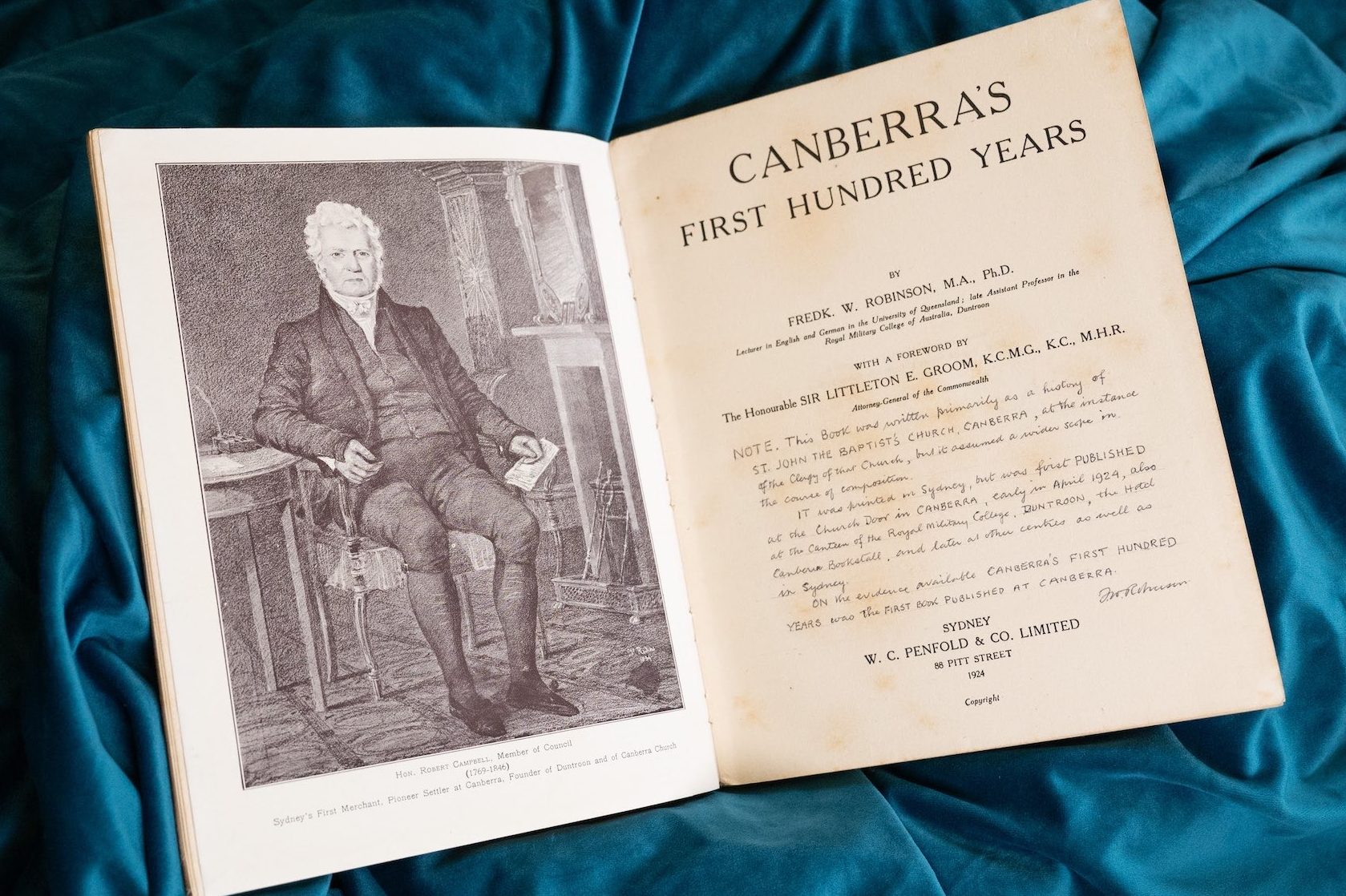
It’s been a hundred years since Frederick Walter Robinson published what is believed to be Canberra’s first book.
Arguably a little premature, he titled it Canberra’s First Hundred Years and it was published in April 1924.
Susan Thomas, assistant curator at the UNSW Canberra Special Collections says the book sees Robinson lament the demolition of early settler buildings.
He also outlines his support for the use of local indigenous names in the new construction plans for Canberra, which Susan says is a testament to his curiosity of the pre-colonial history of the region.
Susan says her favourite of Robinson’s name suggestions is Guruguma, meaning west wind.
“I was born in Canberra and grew up here, even though I live in Bungendore, and that west wind is really a thing,” she says.
“He’s really thinking about the place and wanting to preserve those links.”
But, Susan says, it wasn’t until about five years ago that the special collections team really understood the book’s significance.
“We had a visit from the librarian of the Fryer Library at the University of Queensland,” she says.
“We knew that the Fryer Library had been set up by Frederick Robinson, so we just looked on our catalogue and here was this book, written by Frederick Robinson, so we pulled it off the shelf.
“It was only when we opened it that we realised we had Robinson’s own signed copy, because he signed it at the front and dedicated it to the Royal Military College (RMC).”
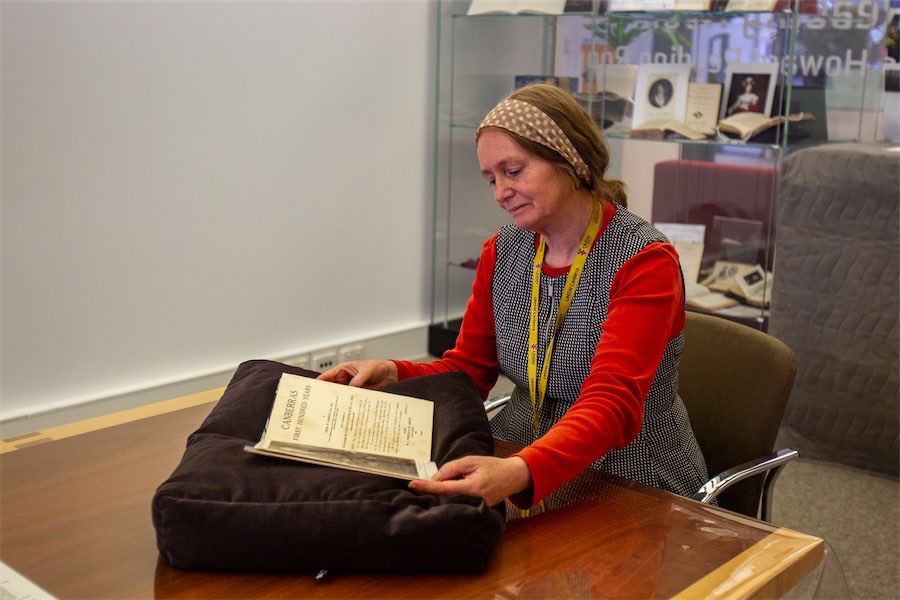
The other significant layer to Robinson’s book is its publication history, that he annotated afterwards, she says.
“If it didn’t have this annotation, we wouldn’t have known that this is the first book published in Canberra,” says Susan.
“I’ve done research about the book to try and corroborate all this and it’s not written explicitly anywhere else, so if he hadn’t explicitly written it down, it would be unknown history, so I think that’s really special.
“It also speaks of the kind of interest in books and history from the Canberra population as well, that there was a market for the book, even though there was not much in Canberra at that time.
“There were these little outcrops that had been built, but they hadn’t all been joined together, and people were really interested about the place they were coming to.
“What’s particularly wonderful is that we get a little glimpse into the book culture of the era, because he says in the annotation, that it was printed in Sydney because there were no printers in Canberra, but publication means making it publicly available.
“The glimpse he gives, because there were no bookshops in Canberra at the time, is that it was published at the church door.
“Normally, when you publish a book, it goes off to all the bookshops and that’s how people get it, but he’s saying that, you could buy it at the church door, you could also buy it at the RMC canteen, and apparently there was a little stall at the Hotel Canberra, which is now the Hyatt Hotel.
“As a rare book curator, I just love that little picture of, there are books here, and there are books there, and you’ve got to get in your motor car or in your dray or something or other and purposely seek out this book.
“I think that it’s a wonderful little gem with many kinds of threads and stories that come out of it.”
Susan says people can look at the book by completing an enquiry form through their website and set up an appointment time.
The ANU has also got a digitised version of the second edition, and while it has some differences due to Robinson revising it, Susan says it allows people to view the basic text online.
The enquiry form is at unsw-adfa.libanswers.com/special
Who can be trusted?
In a world of spin and confusion, there’s never been a more important time to support independent journalism in Canberra.
If you trust our work online and want to enforce the power of independent voices, I invite you to make a small contribution.
Every dollar of support is invested back into our journalism to help keep citynews.com.au strong and free.
Thank you,
Ian Meikle, editor
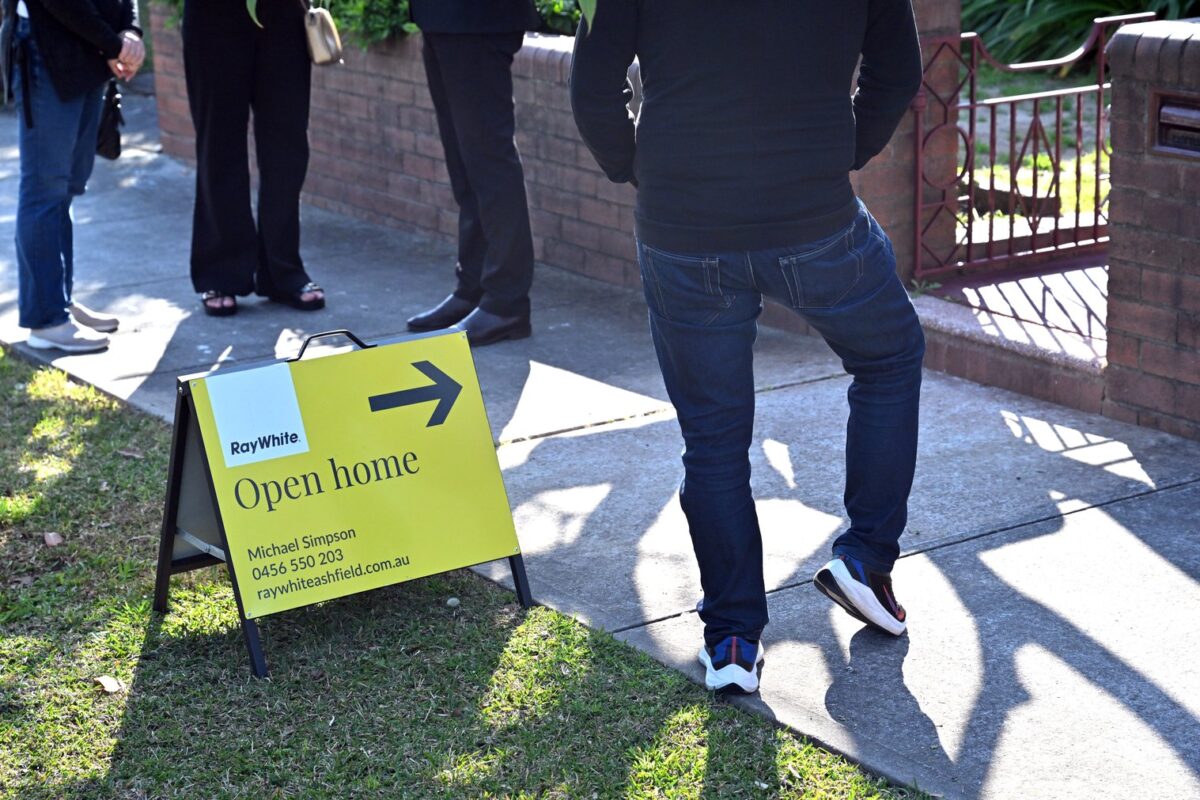
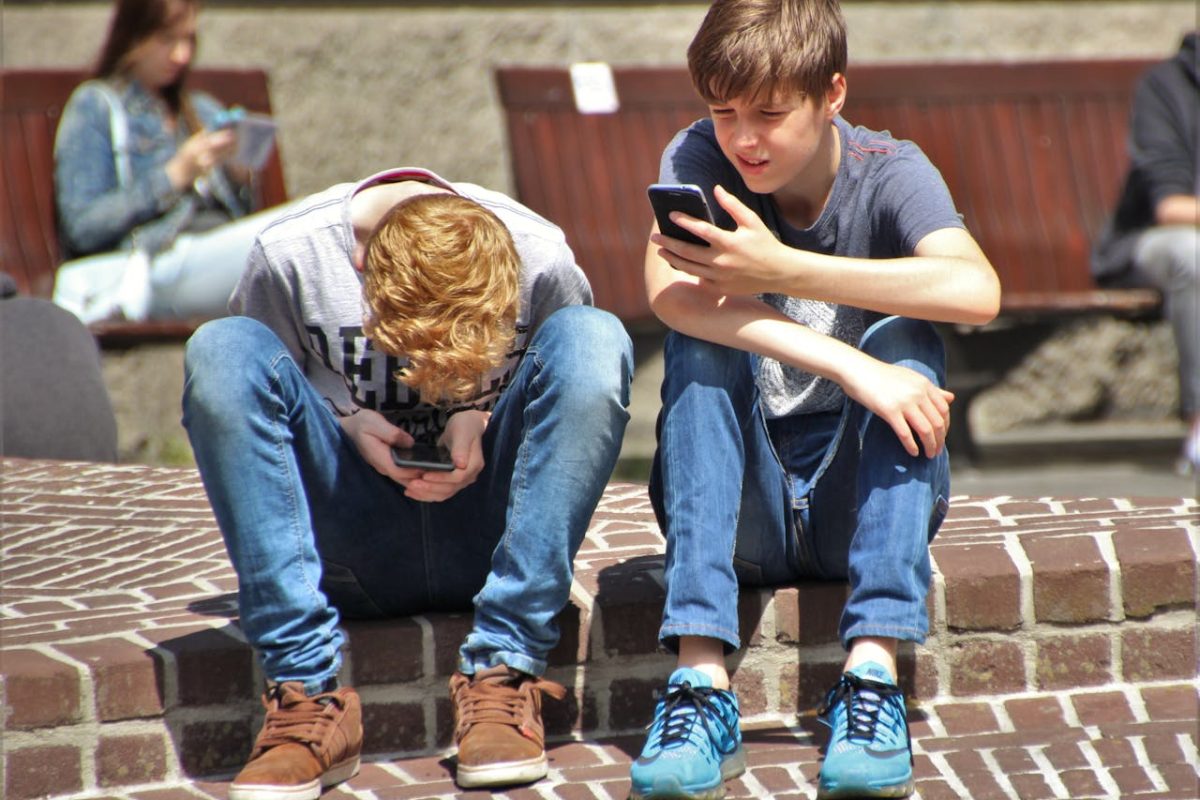
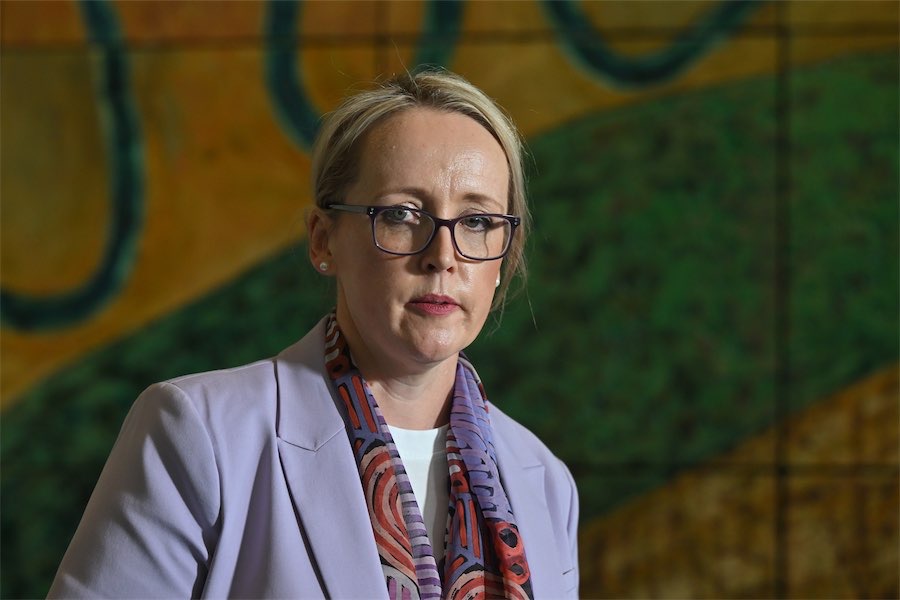

Leave a Reply